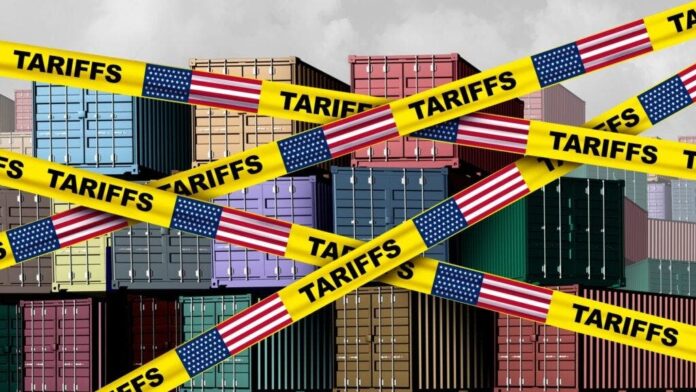President Donald Trump‘s reciprocal tariffs on April 2 (weighted average tariff of 18.2%, inclusive of a 10% baseline tariff and varying levels by individual country) have the potential to impact end demand trends and economic activity (both enterprise and consumer spending) for the remainder of the year, as per Goldman Sachs analyst Eric Sheridan.
Sheridan expects heightened uncertainty to slow corporate decisions between the second and fourth quarters of 2025, including a pullback in real-time investment areas (brand advertising, hiring) and management teams being more reactionary around other longer-dated investment areas (CapEx, R&D, M&A).
The visibility into AI CapEx’s return profile remains unclear, with broad enterprise adoption rates and consumer behavior shifts likely playing out over multiple years.
Also Read: Microsoft Halts Data Center Expansions Due To Semiconductor Tariff Concerns, AI Overcapacity Fears
The hyperscalers remain committed to this current CapEx cycle and noted little downside to fiscal 2025 CapEx guidance for Sheridan’s companies. Under that framework, the analyst would expect that investor debates about the level of CapEx investments will only intensify in the next 6 months.
Based on Sheridan’s conversations, investor fears up until April had been more anticipatory and reactive to data points in other industries. Through the end of March, the analyst still felt relatively comfortable that his coverage’s first-quarter operating performance reflected his current estimates.
Sheridan noted the main realized headwinds to his coverage in the first quarter as the overall slowdown of travel trends and the continued softening of the lower-end consumer concerning discretionary eCommerce goods.
Looking forward, Sheridan noted a rising debate about whether tariffs might push the US consumer away from goods toward more services.
For his coverage, uncertainty remains on whether service sectors like experiences, travel, and mobility are relative beneficiaries of sharply increased tariffs on goods.
Sheridan also noted tariffs potentially supporting a growing mix of non-discretionary goods in consumer baskets.
Based on the analyst’s recent industry conversations, advertising spending is likely to see some impact for the remainder of the year as companies weigh both lower potential end demand and higher input cost inflation. While overall ad spending tends to be a bit of a lagging indicator, the programmatic nature of digital makes certain digital channels and platforms more volatile and subject to real-time pullbacks.
Within digital, Sheridan noted platform exposure to certain pockets of ad spend will dictate the level of headwinds each company sees for the remainder of the year.
On TikTok US, press reports indicate an increasing likelihood of some resolution to keep TikTok operational in the US. Even with a potential resolution, Sheridan’s channel checks point to a pullback from peak levels of both users, engagement, and, more materially, ad spending on the platform as the ongoing uncertainty has weighed on advertiser demand.
At a high level, tariff impacts on eCommerce businesses are largely an output of the volume and cost of goods sold (COGS) exposure by geography, how much price can be passed on to consumers, the resulting decrease in units (elasticity), how much margin can be extracted from suppliers, and the level of substitution of suppliers and geographies.
In a companion note, Sheridan exhibited an illustrative framework for Amazon.com Inc‘s AMZN 1P business concerning these factors.
As a notable offset, the closing of the de minimis exemption for China likely removes competitive pressures from the broader US eCommerce industry. The recent wave of China-based exporters (PDD Holdings Inc PDD Temu and TikTok Shop, and others) that have been heavily reliant on the exemption now face sizable tariffs.
Although these companies have flattened out their U.S. ad spending in recent quarters, Sheridan still anticipates slight headwinds to advertising trends due to less dense auctions if these players leave the market.
Read Next:
Image: Shutterstock
Market News and Data brought to you by Benzinga APIs
© 2025 Benzinga.com. Benzinga does not provide investment advice. All rights reserved.





